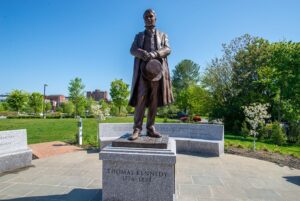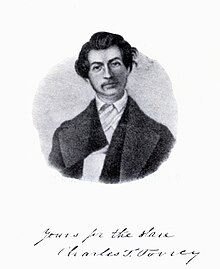Thomas Smallwood (1801-1883), in a column in a New York abolitionist newspaper, mentions the cruelty of a Washington, DC enslaver whose escaped property seemed to “disappear by an UNDER-GROUND RAILROAD or STEAM BALLOON.” Smallwood hears the phrase from a notorious Baltimore constable who jokes that the disappearance of enslaved people might be due to a futuristic means of travel. Underground Railroad soon becomes a popular name for the dangerous path north to freedom. Thomas Smallwood, born enslaved in Prince George’s County and taught by his owner to read and write, is freed by the age of 30. He becomes a shoemaker in Washington, DC, but soon begins recruiting and assisting 400 freedom seekers to escape with a white partner, the Congregational minister Charles Turner Torrey (1813-1846). Torrey moves to Albany New York in 1842 to publish the “Tocsin of Liberty” newspaper. Smallwood is a regular contributor of satirical articles demeaning enslavers. Faced with arrest, Smallwood flees to Toronto, Canada, where he remains for the rest of his life. Charles Torrey moves to Baltimore in 1843 as one of the most influential abolitionists. He is arrested and sentenced to 6 years hard labor in a Maryland prison for aiding escapees. In spite of attempts to seek his release, Torrey dies in prison at the age of 33. Both Smallwood’s and Torrey’s all but forgotten abolition careers appear in a book, “Flee North” by Scott Shane.

Jewish men gain rights of citizenship
“Jew Bill” legislation is passed by the Maryland Assembly in 1826, giving Jewish men all the rights of citizenship equal to Christians. Thomas Kennedy of Hagerstown is the tireless sponsor.





